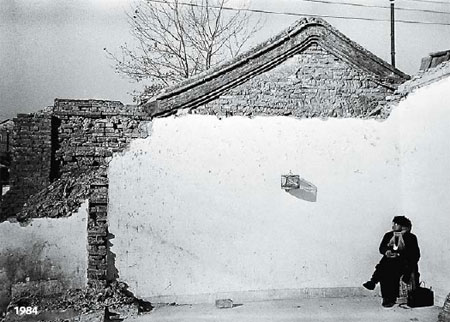|
|
 |
|
30th Anniversary Celebrations
Economic Development
New Rural Reform Efforts
Political System Reform
Changing Lifestyle
In Foreigners' Eyes
Commentary
Enterprise Stories
Newsmakers
Photo Gallery
Video and Audio
Wang Wenlan Gallery
Slideshow
Key Meetings
Key Reform Theories
Development Blueprint
Li Xing:
Teachers like Li need our support Alexis Hooi:
Going green in tough times Hong Liang:
Bold plan best option for economy In with the new
By You Nuo (China Daily)
Updated: 2008-09-08 09:15
   People have long been arguing about the disappearance of China's old cities - whether it should not be so fast, and whether it should not be so cruel as to knock down the buildings that used to give Chinese cities their unique style. Nostalgia has been part of the urban dwellers' culture. Frequently, when the older cab drivers meet customers who speak with the distinctive "local flavor" they soon begin to compare notes about where they used to live - with the expectation that all homes were once within a bike ride from each other, and now many families, if not all, have moved at least once in the last 30 years from the city's central area to some distant, formerly obscure, suburban spots. Today's Beijing has indeed grown so large, and is so much a mixture of Chinese classic buildings and ultra-modern architectural designs, as the argument still continues about protecting traditional houses. In the meantime, the good thing is that the building industry has become one main pillar of the economy in terms of the capital investment and for the jobs it can create. The demand from the construction industry has also fueled rapid increases in the businesses of steel and cement. The change in the cities' skylines has also brought former rural workers into their first urban jobs. In the photo of workers having their lunch break at the construction site of the new headquarters for CCTV, the national television station, you may hear people greeting each other daily in more than five provincial accents. According to figures released at the end of 2006, all Chinese cities were able to accommodate some 577 million fully-registered residents, or around 44 percent of its entire population. But at this stage, China is still in an early stage of urban development. And the building of new houses and new public infrastructure in most cities other than Beijing and Shanghai is still lagging behind. Cities are being built in a markedly decentralized fashion, partly also because of the country's large land area. In comparison with South Korea, where half of its population and GDP are concentrated in Seoul, the capital city, Beijing, as the Chinese capital city, makes up only a little more than 3 percent of China's GDP.

 
 |
主站蜘蛛池模板: 久久精品国产大片免费观看 | 成年人免费看 | 国产精品27页 | 黄网在线观看免费 | 亚洲成aⅴ人片在线影院八 亚洲成av人片在线观看 | 玖草视频在线 | 久久久国产精品福利免费 | 成人免费高清视频网址 | 午夜爽爽爽视频 | 亚洲黄视频在线观看 | 色日韩在线 | 国产在线精品二区韩国演艺界 | 成年人看的毛片 | 国产成人久久综合二区 | 欧美一级毛片免费播放器 | 日本精品一区二区三区在线视频一 | 欧美一级艳片视频免费观看 | 91久久亚洲精品一区二区 | 一区二区三区高清在线 | a免费网站 | 精品久久久久久久久久香蕉 | 国产男女免费视频 | 国产欧美在线一区二区三区 | 精品国产一区二区三区四区不 | 欧美精品v欧洲精品 | 成人二区 | 久久久午夜精品理论片 | 久久国产免费观看精品3 | 国内精品久久久久久网站 | 4438全国最大成人网视频 | 91九色国产porny | 香港三级日本三级人妇网站 | 国产一级在线观看www色 | 日韩 亚洲 制服 欧美 综合 | 欧美一级淫片免费播放口 | 欧美国产高清欧美 | 欧做爰xxxⅹ性欧美大 | 国产精品美女一级在线观看 | 日韩一级在线视频 | 99re免费99re在线视频手机版 | 人人草97 |